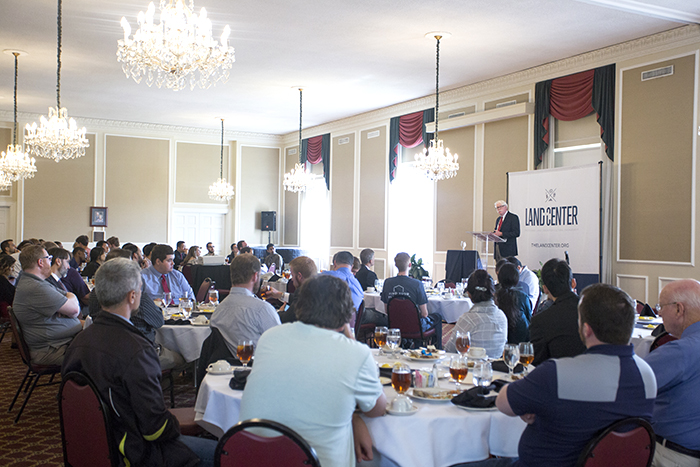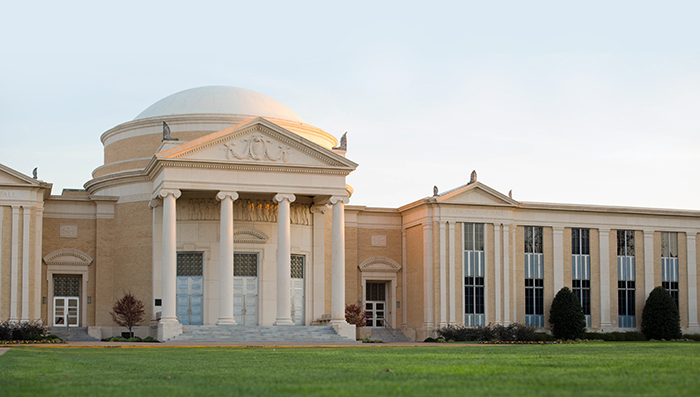Traditional families likely to experience a rebound, historian believes

Feminism, tax laws, blurred gender roles, economic struggles and a wide acceptance of divorce continue to take their toll on the American family, says Allan C. Carlson, but a close inspection of past cycles “indicates a promising scenario.” Carlson, the John A. Howard Distinguished Fellow for Family and Religious Studies at the International Organization for the Family and editor of The Natural Family: An International Journal of Research and Policy, was the speaker at this semester’s first Land Center luncheon on Sept. 26 at Southwestern Seminary.
“Certainly, the family unit is jeopardized from many sides. Many Americans reject marriage, and the divorce rate remains stubbornly high,” he said. “The state of the natural family in the 21st century is a cause for concern.” Carlson defines the natural family as “the fundamental social unit, inscribed in human nature, and centered around the voluntary union of a man and a woman in a lifelong covenant of marriage.”
“But there is some cause for optimism,” he said, explaining that family strength, and disruptions in family strength, occur in 50-year cycles. He characterized a cycle of strong families as being marked by a high marriage rate, high fertility rates, close attention to parenting, and relatively few divorces. Conversely, a weakened family state displays evidence of more divorces and a retreat from traditional roles.
Carlson said cycles of family strength exhibit eight common traits. When a culture supports strong families:
The needs of the community take precedence over the needs of the individual. “There is a feeling that the whole is more than the sum of its parts,” he said.
A family-centered worldview dominates family priorities “in which children are formed to God.” Carlson cited the writing of mid-19th century writer Lydia Sigourney in which she made the case that home-schooling children should be a wife’s greater focus than housekeeping.
A strong commitment to matrimony and child-rearing are essential to the family structure. In that regard, children enhance marriages and are not considered incidental to the union.
Family units are strong when the family “economy” is strong. When all members labor for the common good, that work structure promotes family independence.
A strong middle class is prevalent. The rise of factory work during the Industrial Revolution created a majority of workers able to afford homes and support children, and led to a period of family strength.
Government policies encourage “child-rich homes.” As an example, he said, Franklin Roosevelt’s New Deal introduced Social Security and guaranteed home-loan programs that encouraged home ownership and family-raising.
There is a significant differentiation in the delineation of the genders. The differences between men and women are acknowledged, upheld and appreciated.
Families tend to have a strong patriarch—and a strong matriarch who concedes that role to him. A strong family structure requires the steadfast support of women.
Why does a history of cycles matter? “The former president, academics, the elites and journalists claim that they are on the ‘right side,’ ” Carlson said. “This emerges from a tangled Marxist and feminist history. But examining historic cycles indicates that there are dependable, cyclic earmarks of family-strong eras.”



